If you are a confit garlic and tomato fan, you must try this confit shallots recipe. By slow cooking the shallots in olive oil, their taste and texture are transformed into something sweet and tender, and when stored in olive oil, they will last for two months or more in the refrigerator. As a condiment, they can accompany many dishes and be a beautiful addition to your grain bowls, tacos or even toast. One of my favourite things is to turn the confit shallots into a puree and add them to my toast with either cheese or pan-fried mushrooms.
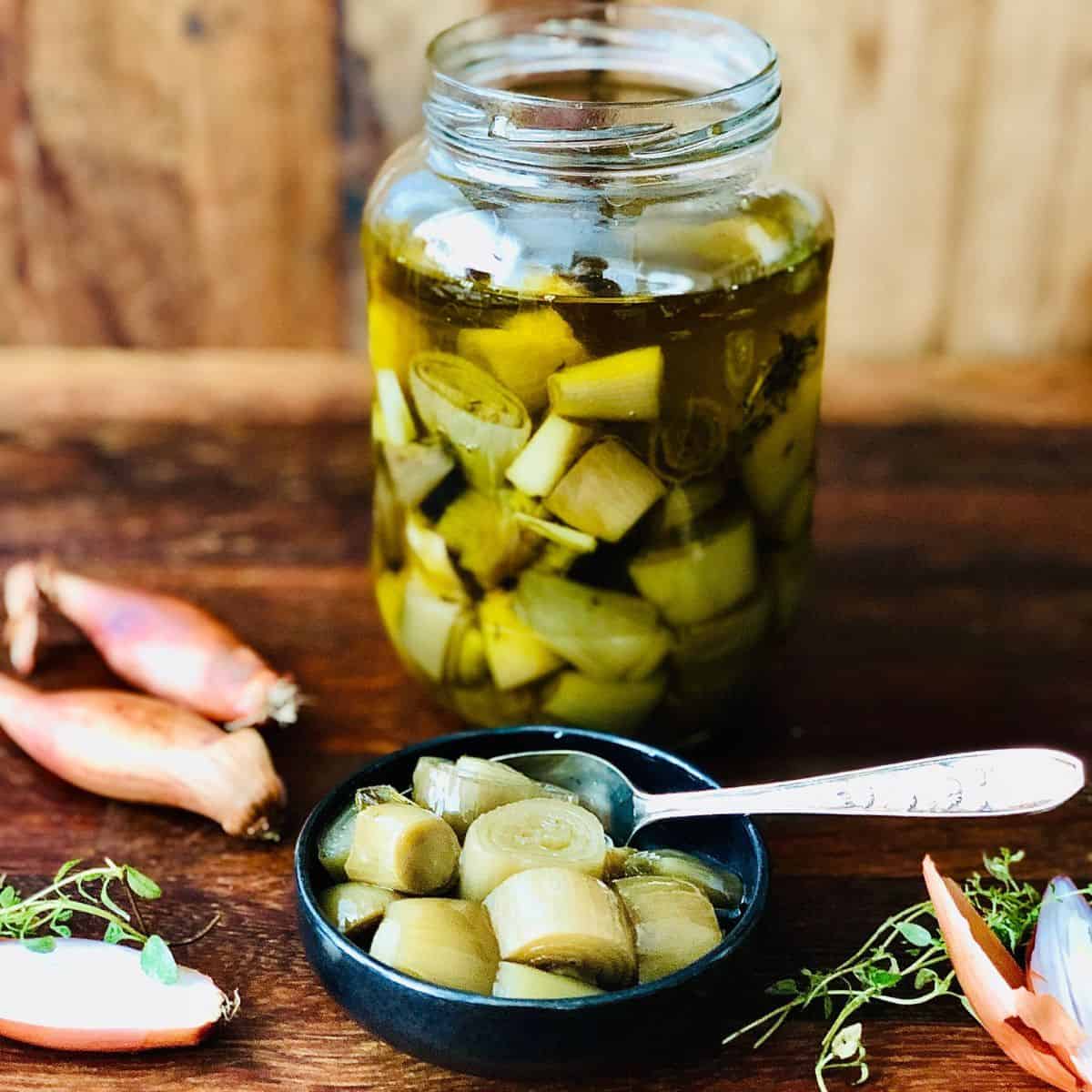
Ingredients
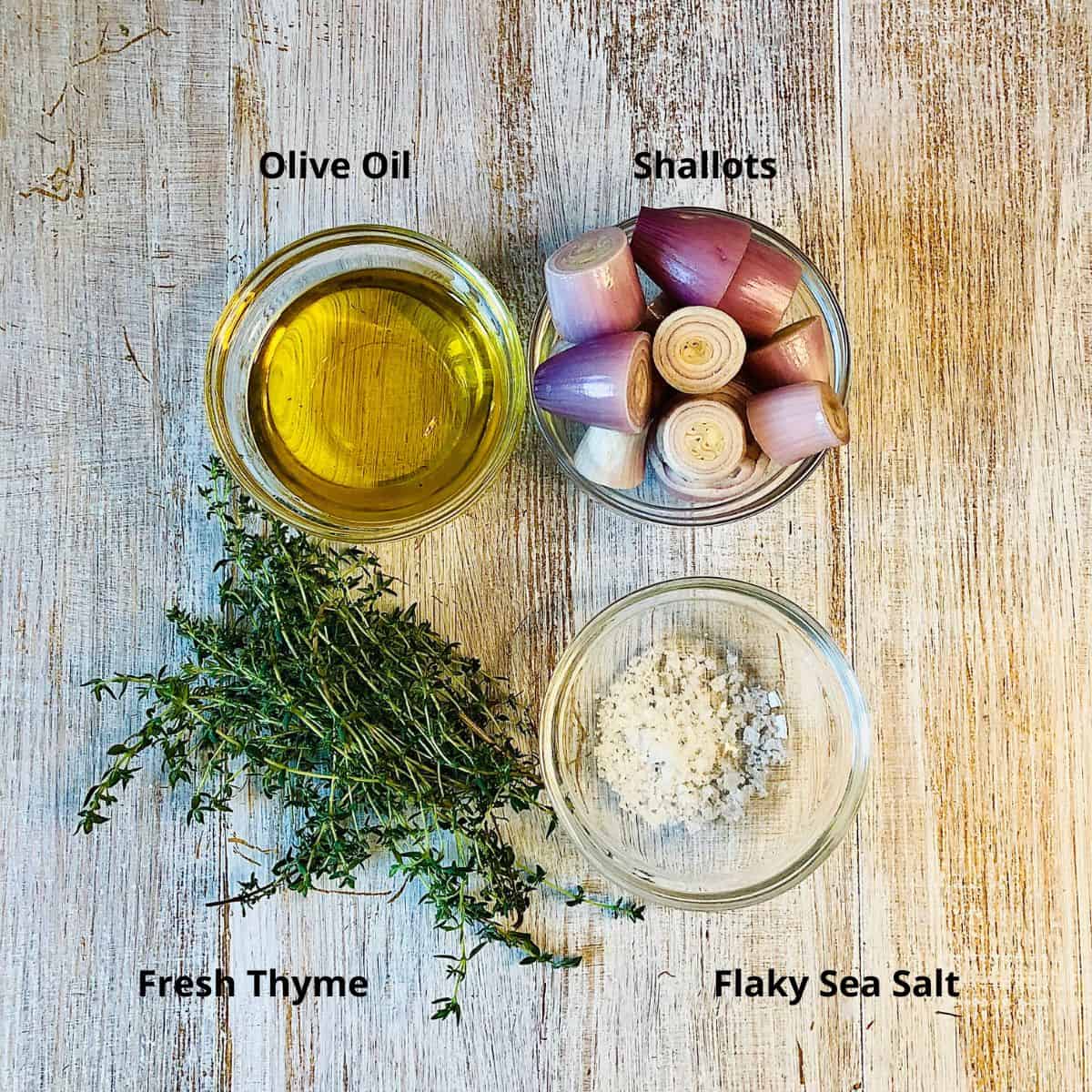
- Olive oil
- Shallots
- Fresh thyme
- Flaky sea salt
See the recipe card for quantities.
Instructions
First, sterilise the jar where you intend to store the confit shallots by washing it in warm soapy water and placing it in the oven at 100ºC for thirty minutes.
Prepare the shallots by cutting off the head and tail and peeling them. Cut the shallots into slices about the thickness of your finger.
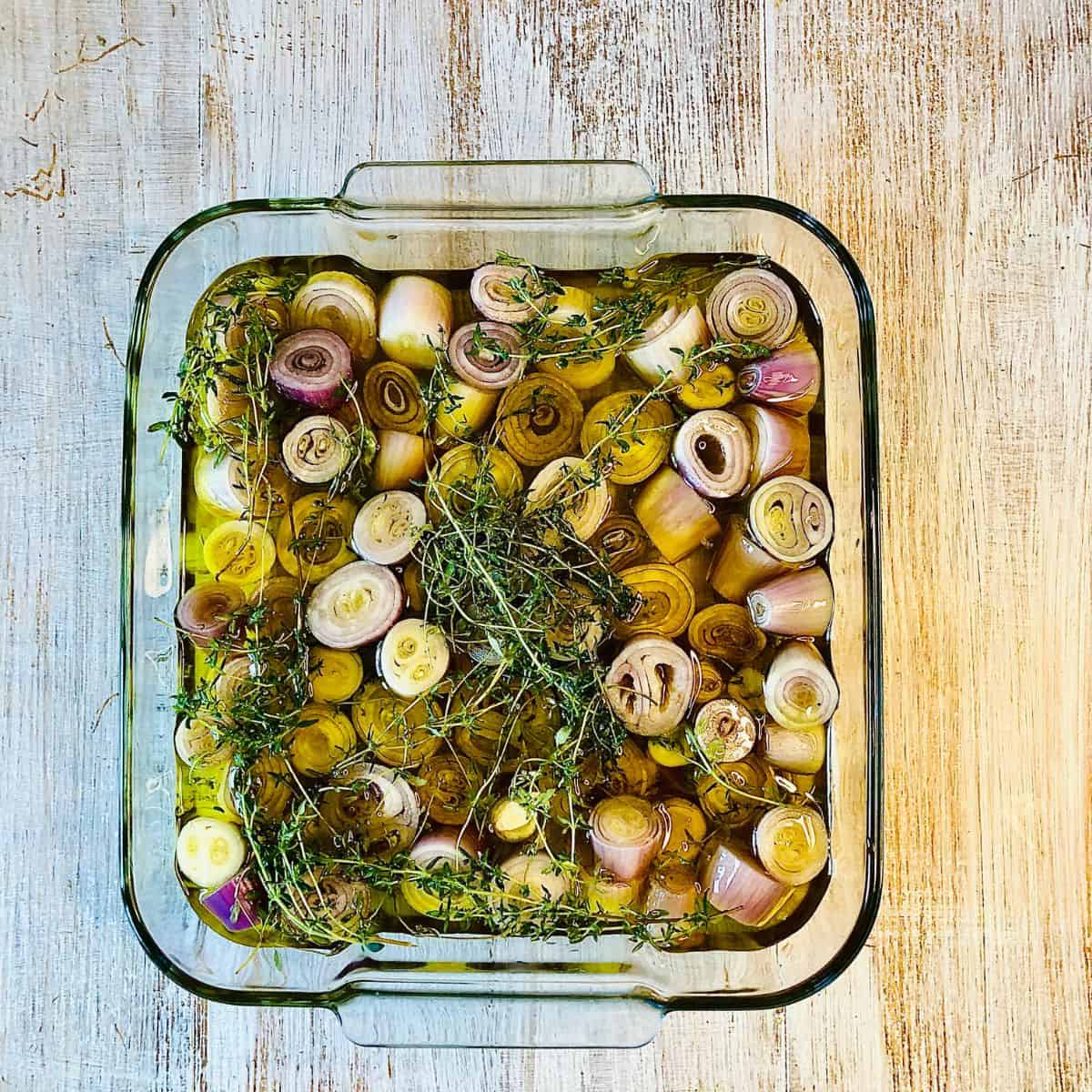
Place the shallots into an oven-proof baking dish and cover with olive oil. Add the sea salt and thyme. Cook for 60 minutes in the oven at 120ºC

After one hour, the shallots should be soft and translucent. They should be soft enough to break with the back of a fork. If they are not soft, pop them back in the oven for another 20 minutes approximately.

Once done, remove from the oven and remove the thyme. Transfer to a sterilised jar and cover with olive oil.
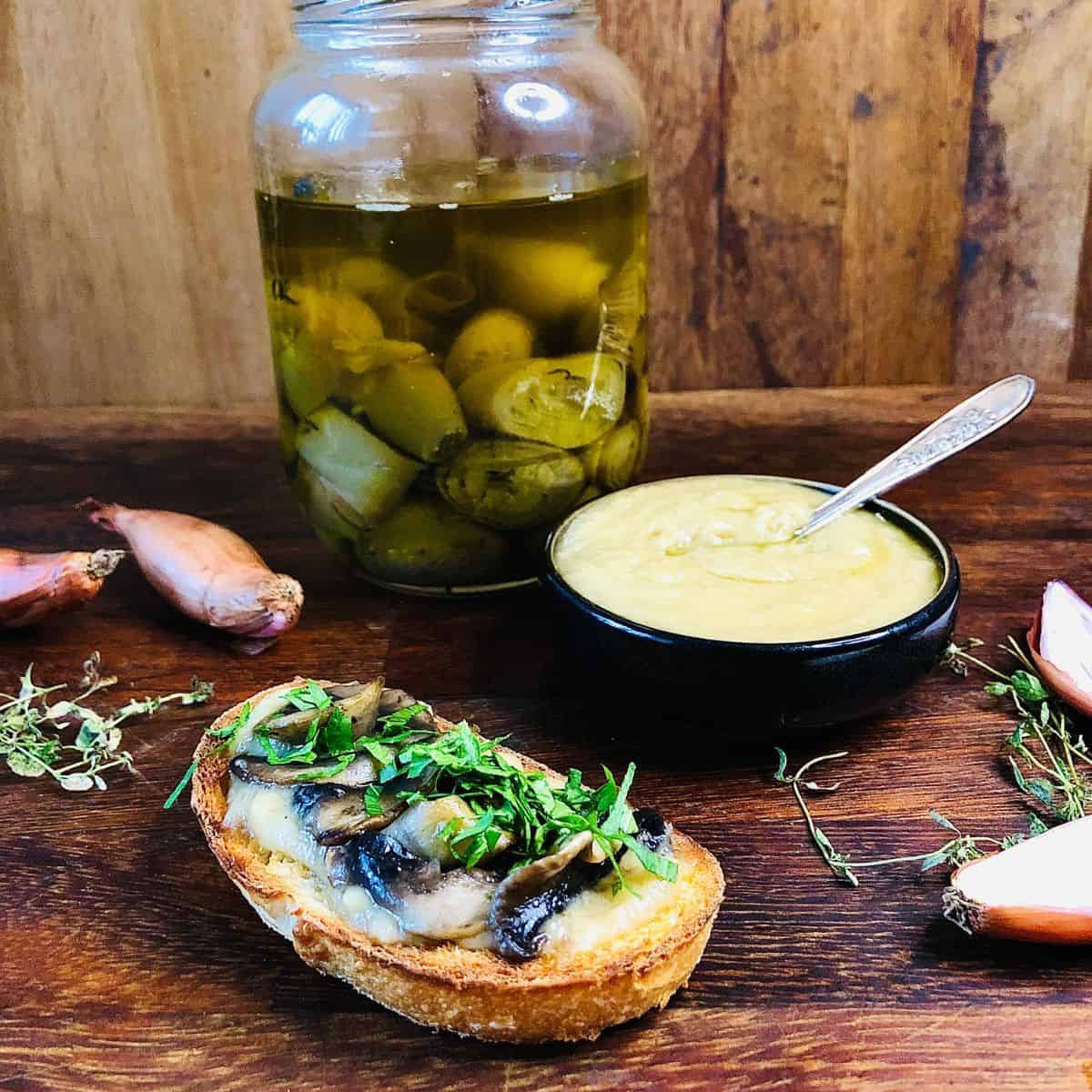
Serving suggestion. Pureed confit shallots and fried mushrooms on a sourdough slice.
Variations
I have used thyme as an aromatic for slow cooking the shallots. Why not try other herbs or spices like rosemary, dried chillies and black peppercorn?
Equipment
I reuse sterilised old jars. I like to save glass jars to use again. It is essential to sterilise them before use by washing them in warm soapy water and then placing them in the oven at 100ºC for thirty minutes.
Top Tips
For the shallot to preserve, it is important to ensure they are covered with olive oil completely in the jar and to use a clean, dry spoon each time you use some.
📖 Recipe
FAQ
Confit (pronounced con-fee) means "to preserve". It is a process of slow cooking in fat or oil at low temperatures instead of frying at higher temperatures. Initially a method for cooking and preserving meat in its fat, it can be used as a method to cook vegetables in oil and fruit in a sugar solution too.
Other popular ingredients to confit are tomatoes and garlic. Please look at my confit heirloom tomato recipe. Other vegetables can be slow-cooked in oil, too, such as root vegetables like carrots, and potatoes, as can mushrooms. I also have a recipe for a candied orange peel that uses the confit cooking method.
You can use vegetable oil; however, you will lose the earthy flavour benefits of olive oil, so I strongly recommend using extra virgin olive oil.
Yes, you can reuse the olive oil, so don't be tempted to dispose of it after making your confit shallots. It will have infused with the aroma of the shallots and thyme, enhancing its flavour. Use it for salad dressings or roasting veggies. I'm all about the sustainable use of foods, and olive oil can keep giving after its first use!
Shallots are popular with chefs because they are not as fiery as onion and have a sweeter taste.
Food Safety
In a professional kitchen, food hygiene and safety are top priorities, and from the beginning of my training, I practised good habits and routines. Of course, practising good food hygiene and safety at home is also essential. Here are some fundamental practices to adopt in the kitchen.
- Wash your hands regularly while preparing, handling and cooking food.
- Wipe down countertops and high-contact points regularly.
- If you cook meat and fish, do not use the same utensils on cooked food that previously touched raw meat. Use separate chopping boards for meat and fish. Wash your chopping boards immediately after use.
- Thoroughly cook food to a minimum temperature of 165 °F (74 °C).
- Don't leave food at room temperature for extended periods (more than 2 hours).
- Store food correctly.
For more details regarding food hygiene and safety in the home, visit the UK Government's Food Standards Agency webpage.



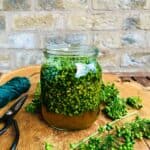






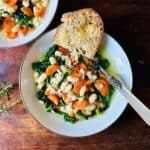


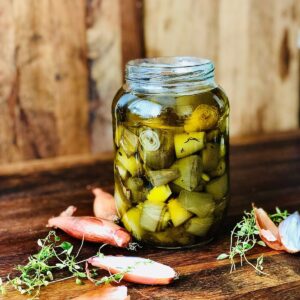
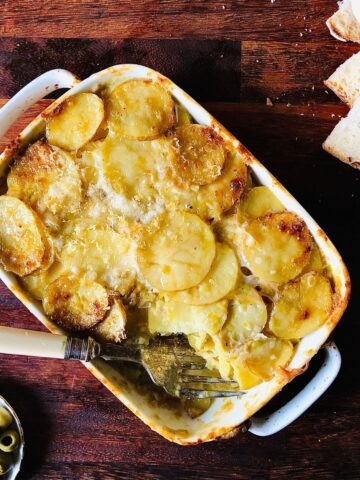
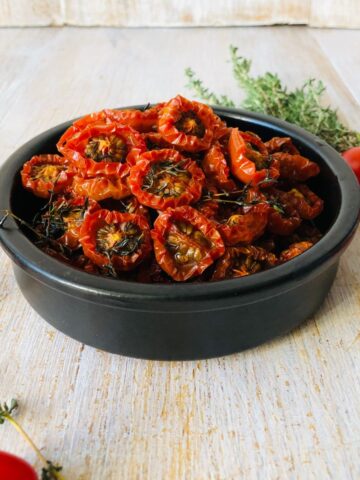
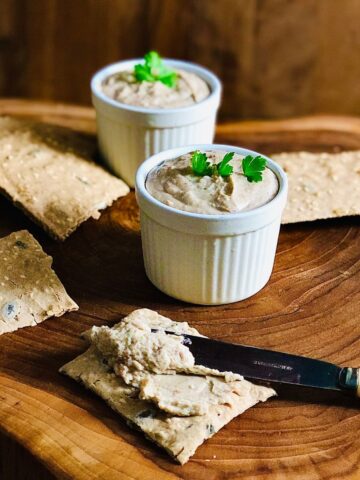

Leave a Reply